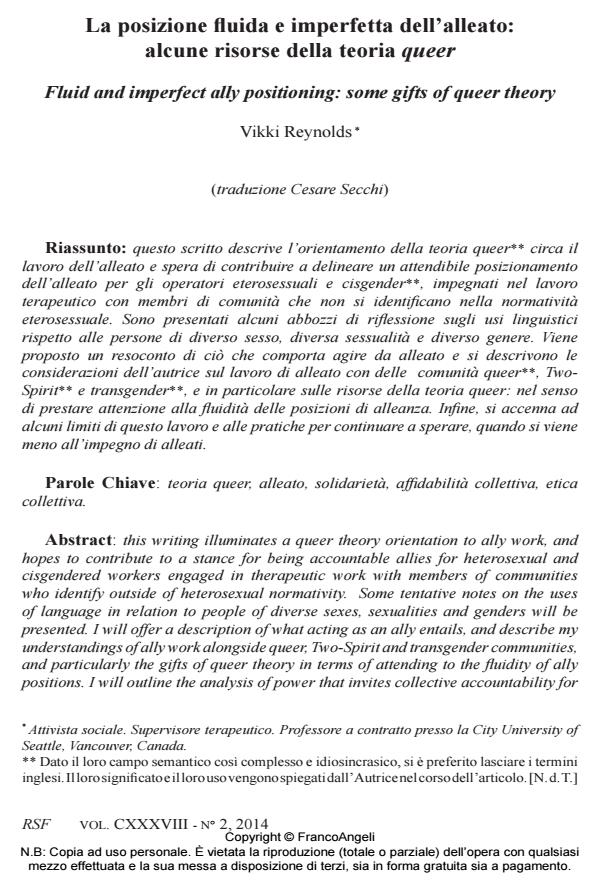La posizione fluida e imperfetta dell’alleato: alcune risorse della teoria queer
Titolo Rivista RIVISTA SPERIMENTALE DI FRENIATRIA
Autori/Curatori Vikki Reynolds
Anno di pubblicazione 2014 Fascicolo 2014/2
Lingua Italiano Numero pagine 15 P. 129-143 Dimensione file 1602 KB
DOI 10.3280/RSF2014-002009
Il DOI è il codice a barre della proprietà intellettuale: per saperne di più
clicca qui
Qui sotto puoi vedere in anteprima la prima pagina di questo articolo.
Se questo articolo ti interessa, lo puoi acquistare (e scaricare in formato pdf) seguendo le facili indicazioni per acquistare il download credit. Acquista Download Credits per scaricare questo Articolo in formato PDF

FrancoAngeli è membro della Publishers International Linking Association, Inc (PILA)associazione indipendente e non profit per facilitare (attraverso i servizi tecnologici implementati da CrossRef.org) l’accesso degli studiosi ai contenuti digitali nelle pubblicazioni professionali e scientifiche
Questo scritto descrive l’orientamento della teoria queer** circa il lavoro dell’alleato e spera di contribuire a delineare un attendibile posizionamento dell’alleato per gli operatori eterosessuali e cisgender**, impegnati nel lavoro terapeutico con membri di comunità che non si identificano nella normatività eterosessuale. Sono presentati alcuni abbozzi di riflessione sugli usi linguistici rispetto alle persone di diverso sesso, diversa sessualità e diverso genere. Viene proposto un resoconto di ciò che comporta agire da alleato e si descrivono le considerazioni dell’autrice sul lavoro di alleato con delle comunità queer**, Two- Spirit** e transgender**, e in particolare sulle risorse della teoria queer: nel senso di prestare attenzione alla fluidità delle posizioni di alleanza. Infine, si accenna ad alcuni limiti di questo lavoro e alle pratiche per continuare a sperare, quando si viene meno all’impegno di alleati.
Parole chiave:Teoria queer, alleato, solidarietà, affidabilità collettiva, etica collettiva.
Vikki Reynolds, La posizione fluida e imperfetta dell’alleato: alcune risorse della teoria queer in "RIVISTA SPERIMENTALE DI FRENIATRIA" 2/2014, pp 129-143, DOI: 10.3280/RSF2014-002009